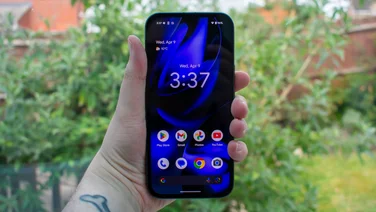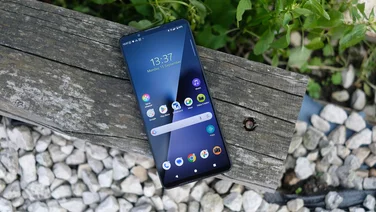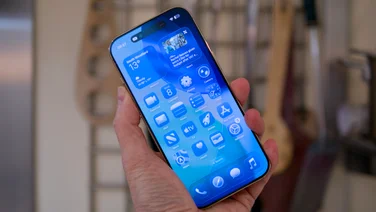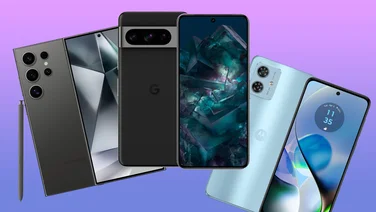To help us provide you with free impartial advice, we may earn a commission if you buy through links on our site. Learn more

Google’s Pixel phones have always been far better than they have any right to be and are still the gold standard for Android phone lovers. But what happens when you pit the latest Pixel phone against the model it’s meant to replace?
The biggest difference between the Google Pixel 9a and Pixel 8a is a staggering improvement in power efficiency, with the Pixel 9a delivering some of the best phone battery life that we’ve ever recorded. That stamina is paired, however, with “minimal performance improvements” according to our reviewer.
That said, there’s more to the difference between these two phones than battery life, and it’s worth spending a few minutes laying it all out, given that the Pixel 8a is, as of time of writing, more than £150 cheaper than its younger sibling. That kind of saving is not to be sniffed at.
You can check out our full reviews of the Google Pixel 9a and Pixel 8a for more in-depth detail but otherwise, read on to see which of these excellent smartphones we recommend you choose.
Price and specifications
| Google Pixel 9a | Google Pixel 8a | |
| Price | £499 (128GB); £599 (256GB) | £335 (128GB); £395 (256GB) |
| Processor | Google Tensor G3 | Google Tensor G4 |
| Display | 6.3in, 2,424 x 1,080, 120Hz pOLED | 6.1in, 2,400 x 1,080, 120Hz OLED |
| RAM | 8GB | 8GB |
| Storage | 128GB; 256GB | 128GB; 256GB |
| Cameras | 48MP (f/1.7); 13MP (f/2.2) ultrawide; 13MP (f/2.2) selfie | 64MP (f/1.9); 13MP (f/2.2) ultrawide; 13MP (f/2.2) selfie |
| Battery | 5,100mAh | 4,492mAh |
| Dimensions (WDH) | 73 x 8.9 x 155mm | 73 x 8.9 x 152mm |
| Weight | 186g | 188g |
| IP rating | IP68 | IP67 |
Design and display
Sometimes, phone manufacturers give us a major shift in design from one generation to the next but recently, the directive has very much been iterative updates that feel cannily similar to the previous batch.
Google has been as guilty of this as anyone but with the Pixel 9 series, it’s shaken things up a bit. Nowhere is this more prevalent than on the Pixel 9a, which does away with the iconic camera bar completely. The matte plastic rear is the same as before but the recycled aluminium edges have also been flattened out for this generation.
The latter is an acceptable change but we do much prefer the camera bar on the 8a, since it gives the phones more unique character. Without a bar to add a splash of identity, the Pixel 9a looks rather generic from the rear.

The 9a sports a slightly larger screen, which means the phone itself has grown a little taller to accommodate. It’s also now a P-OLED (Polymer OLED) display; the refresh rate is the same as before, as is the resolution (roughly), but this panel gets significantly brighter than the Pixel 8a’s display.

In our testing, with the 9a we saw 1,814cd/m2 of peak brightness on the Pixel 9a versus 1,360cd/m2 for the 8a. Both devices are vibrant and scored well for colour accuracy, so there are no other areas in which the Pixel 8a falls behind, but that additional brightness snags the Pixel 9a the win here.
Winner: Pixel 9a
Performance and battery life
The Pixel 9a runs on the new Tensor G4 chipset, which is once again made with a 4nm process but has a marginally higher clock speed than the outgoing Tensor G3 (3.1GHz compared to 3GHz).
Given that minimal difference, it makes sense that we don’t see a particularly noteworthy uptick in performance: the Geekbench 6 scores are respectable on both counts but virtually identical across the two phones.
When it comes to graphics performance, there’s a slightly larger difference on paper – but you’d be hard-pressed to notice it with the naked eye in day-to-day use.
The most dramatic (or “suspiciously incredible” according to our reviewer) difference is in battery life.
Between the much larger 5,100mAh battery and the improved power efficiency of the Tensor G4, the Pixel 9a managed to last an incredible 34hrs 5mins – around 10 hours longer than the Pixel 8a. This alone might make the extra 150 quid worth it for many buyers, and you’re not sacrificing a lick of performance to get this. Quite the contrary.
Neither model ranks among the fastest charging phones on the market but the Pixel 9a does at least improve charging speeds slightly, from 18W to 23W. This saw it reach a full charge in 1hr 36mins in our testing, whereas the Pixel 8a took closer to two hours.
Winner: Pixel 9a
Software and AI
One of the main reasons people buy Pixel phones is the software. The version of Android employed here is straightforward and unembellished with gaudy design or overburdened with excessive bloatware. You also get first dibs on the latest Android features, too.
Since these are both mid-range phones, don’t expect every feature in the latest Android versions to be present or work as well as it should – with just 8GB of RAM, neither one gets the full suite of AI features seen on the Pixel 9 Pro devices.
Both still support Circle to Search and can run local AI models like Gemini Nano but the Pixel 9a pulls slightly ahead by adding the image compositing Add Me feature to its camera suite, allowing you to insert the photo taker into group shots. Or do silly things, like this:

Both devices offer seven years of updates, which is fabulous, but that does mean that the Pixel 8a will drop off with Android 21, while the Pixel 9a will extend to Android 22. Of course, if you’re the sort of person who buys a new phone every 2-3 years, this is largely irrelevant, as both phones will stay fully supported until you decide to move on to something else.
Winner: Pixel 9a (by a whisker)
Cameras
Fantastic camera technology is synonymous with the flagship Pixel phones but, as you might expect, the mid-range offerings are slightly stripped back – otherwise there would be less reason to open your wallet for the more expensive models.
That said, you’d be hard-pressed to find any other phones in this price range that can keep up photographically with both the Google Pixel 9a and Pixel 8a.
The 9a actually has significantly fewer megapixels in its main shooter (48MP vs 64MP) but megapixels aren’t the be all and end all of quality. And as you can see below, the Pixel 9a still produces bright and vibrant images that are packed with detail and impressive dynamic range.

That being said, the Pixel 8a is still one of the best phone cameras in its price range, matching the strengths of its successor beat for beat. In short, you’re unlikely to be disappointed by either of these excellent shooters.

The ultrawide camera is identical between the two models and, once again, it’s one of the best of its kind. Here’s the Pixel 9a:

And here’s the Pixel 8a:

The main camera component that separates the Pixel 9a and Pixel 8a from their pricier siblings is a telephoto lens. These used to be solely found on flagships but recent mid-rangers like the Nothing Phone (3a) and the Oppo Reno 13 Pro have added them, so it would be great to see Google join the club next time around.
Winner: It’s a tie
Google Pixel 9a vs Google Pixel 8a: Verdict
For those of you keeping count, it’s clear that the Google Pixel 9a is an improvement over its predecessor. Most prominently, its battery life is nothing short of outstanding. If this is most important to you, the Pixel 9a is a no-brainer.
With that being said, there’s simply no way to look past that price difference , with over £150 separating two phones that are virtually identical for all other practical purposes. Unless you must have that brighter screen or (admittedly) much better battery life, we have no problem recommending the Google Pixel 8a over the newer phone.
Winner: Google Pixel 8a





